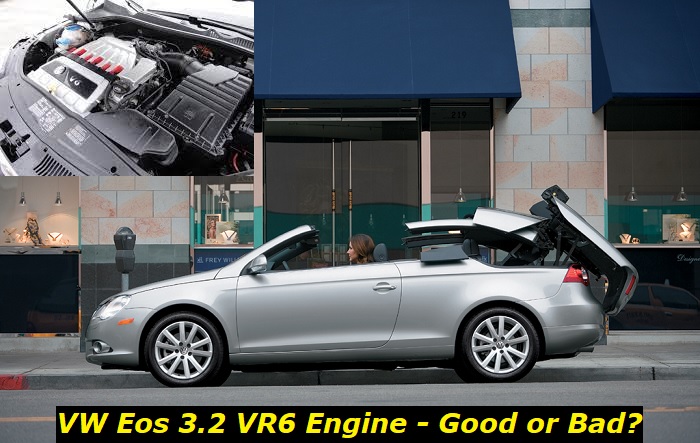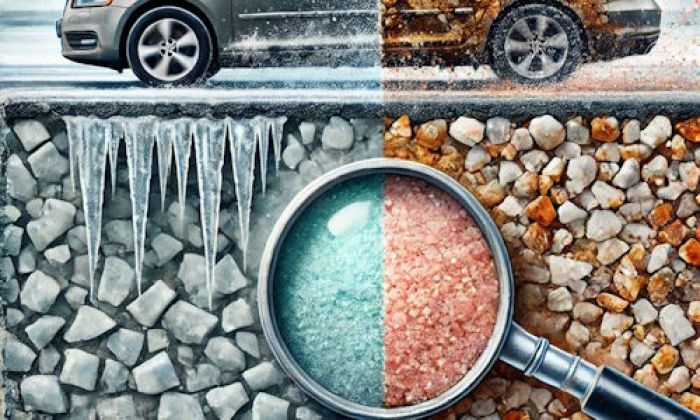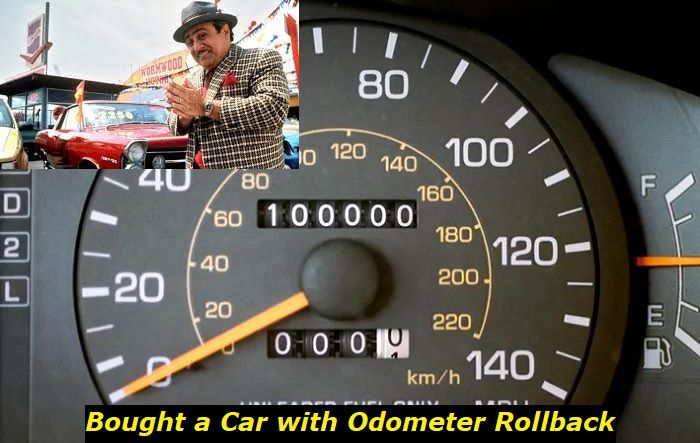The VR6 was a major leap in engine development back in the early 90s. Up to now, it's still in use but naysayers have always said that its days are numbered. Well now, that might be a looming reality that many fuel-fed engines have to face amid the ever-growing dominance of EVs and hybrids.
One of the vehicles that took a shot at this oddball of a powerplant was the Volkswagen EOS in a very short time. In this article, we will present to you whether or not it was a good call for the German automaker to use the engine in this car.

Key features and my opinion about the engine
- Production years:2005-2010
- Average lifespan of 3.2 VR6:180,000-200,000 miles
- Fuel supply type:direct injection (Bosch Motronic)
- Power range:250 hp
- Fuel efficiency:awful
- Engine block material:cast iron
- Engine reliability score:medium
- The most common problems: oil consumption, expensive and weak timing chains, weak ignition coils, cooling system problems (complicated system with two pumps).
Key Specs of the 2007-2008 Volkswagen Eos 3.2L VR6 Engine
The gasoline-fed 3.2L VR6 engine used by Volkswagen is also known as the VW R32 or EA360 BUB. Its key applications extended even to the Audi luxury car subsidiary of its maker.
The 3.2L VR6 engine's grey cast-iron cylinder block features a narrow 15-degree angle separating the banks of its cylinders. The crankshaft is made of die-forged steel, and the cylinders are offset from the center by 12.5 mm. In this instance, the distance between each cylinder's firing is 120 degrees. There are seven main bearings on the crankshaft.
The need for separate cylinder heads for each bank of cylinders was eliminated by the narrow V-angle. The engine uses a single aluminum alloy head and double overhead camshaft (DOHC). It possesses four valves per cylinder managed via a VVT (variable valve timing) system for air and fuel optimization while the powerplant's operation is driven by a timing chain.
To ensure a balance of performance and fuel efficiency, the fuel delivery of the 3.2L VR6 engine is operated through a sequential multi-port fuel injection (SPFI) highlighted by six injectors positioned on the intake manifold ports. Meanwhile, the electronic ignition system showcasing six spark coils in each cylinder aids in the quick cranking of the power unit.
By the numbers, the 2007-2008 Volkswagen Eos VR6 engine has a displacement of 3,189 cc. It has a bore of 84 mm, a stroke of 95.9 mm, and a compression ratio of 11.3:1. Overall, the 2007-2008 Volkswagen Eos 3.2L VR6 engine is packing 247 hp at 6,300 rpm and 236 lb-ft of torque at 2,500 to 3,000 rpm.
Matched with a six-speed automatic transmission directing the power to a front-wheel-drive system, those numbers propel the coupe and cabriolet versions of the EOS from 0 to 60 mph by an estimated time of 6.9 seconds. Furthermore, its EPA fuel efficiency is rounded off at 18 mpg in city drives, 35 mpg in highway speeds, and 26 mpg combined.
Longevity of the 2007-2008 Volkswagen Eos 3.2L VR6 Engine
The 3.2L VR6 engine used by the 2007-2008 Volkswagen Eos has durability that's designed to last over 250,000 miles. However, that number accounts for regular maintenance and taking care of the problem it is known for early on like its notorious serpentine belt tensioner failure and potential timing chain breakage within its first hundred thousand mileage.
Most Common Problems Found in the 2007-2008 Volkswagen Eos 3.2L VR6 Engine
The 2007-2008 Volkswagen Eos 3.2L VR6 Engine may be durable but some things certainly put its reliability into question. The top known problems of the powerplant over the years are the following:
1. Serpentine Belt Tensioner Failure
The serpentine belt tensioner is a crucial component in the Volkswagen Eos 3.2L VR6 engine. It keeps the serpentine belt tight so that it can properly drive the engine's accessories.
The problem concerning the serpentine belt tensioner of the engine is considered to be its Achilles heel. So, when the tensioner fails, the belt can slip or even break, causing the engine to overheat or the accessories to stop working.
Several symptoms can indicate a problem with the serpentine belt tensioner that you should pay attention to. If you notice any of them, it's important to have the vehicle checked by a mechanic as soon as possible.
One is when the serpentine belt is loose or makes a noise when the engine is running. Another is when the engine overheats, even when there is no obvious reason (such as driving in hot weather or towing a heavy load). Next is when the engine stalls, or runs roughly when idling. The last is when the battery light on the dash comes on, or the engine won't start.
There are several potential causes of a failing serpentine belt tensioner. The first is wear in the bearings that support the tensioner pulley causing the pulley to wobble. This can cause the belt to slip or break. The second is corrosion in the tensioner housing that can cause the tensioner itself to seize up.
This will hinder the belt from being tightened, leading to slipping or breaking. The third is a break in the spring that keeps the tensioner pulley from moving too far. If this spring breaks, the pulley can move too far and cause the belt to slip or break.
In most cases, the entire serpentine belt tensioner assembly will need to be replaced. This includes the tensioner pulley, the housing, and the spring. Depending on the severity of the damage, other components such as the serpentine belt itself may also need to be replaced. These may even add the other parts that may have been damaged by tensioner part debris getting flung into the other sensitive parts of the engine bay.
If you notice any of the symptoms of a failing serpentine belt tensioner, it's important to have the vehicle checked by a mechanic as soon as possible. Replacing the tensioner before it fails completely can prevent costly damage to the engine and other car parts.
2. Premature Wear of the Timing Chain
The timing chain should last for the duration of the engine's life. However, the Eos is known for its premature wear just past the 100,000-mile mark.
Signs that the timing chain may need to be replaced include a rattling noise from the engine, misfires, and a Check Engine light activating. The cause of the problem is most likely due to manufacturing defects and/or poor maintenance practices.
The most common solution to this issue is to replace the timing chain, as well as all the components associated with it like the timing chain tensioner if needed. If you are experiencing any of these symptoms, it is best to take your car to a qualified mechanic for a diagnosis. They will be able to tell you for sure if the timing chain needs to be replaced or simply recalibrated plus perform any other necessary repairs.
3. Fault in the Ignition Coil Pack
The ignition coil pack in the Volkswagen Eos 3.2L VR6 engine is responsible for providing the high-voltage spark that ignites the air-fuel mixture in the cylinders. Over time, due to normal wear and tear, the coil pack can begin to fail, causing a loss of power and efficiency. Symptoms of coil pack failure include misfires, engine shaking, and a loss of power.
If you suspect that your coil pack is failing, it's important to have it checked out by a professional as soon as possible. There are a few different ways to test for coil pack failure, including using a multimeter or an oscilloscope. If the coil pack is indeed failing, it will need to be replaced.
There are a few different things that can cause coil pack failure, including age, wear and tear, and exposure to heat and vibration. Sometimes, it may be possible to repair the coil pack, but most of the time, it will need to be replaced.
If you suspect that your coil pack is failing, it's important to have it checked out by a professional as soon as possible. With proper diagnosis and treatment, you can avoid further damage to your engine and keep it running smoothly for years to come.
4. Valve Intake Damage and/or PCV Diaphragm Damage
Volkswagen Eos 3.2L VR6 EA360 BUB engine has two main types of valves: intake and exhaust. The valve intake is responsible for bringing air into the engine, while the exhaust valves remove fumes and gases. Both types of valves are opened and closed by a camshaft, which is turned by the crankshaft.
Meanwhile, the PCV diagram in the Volkswagen Eos 3.2L VR6 engine is a positive crankcase ventilation system. This system helps to remove pressure and harmful gases from the engine's crankcase. The PCV system includes a number of parts, such as a valve, hoses, and a canister.
If any of these parts are damaged, it can cause problems with the engine's performance. Some of the symptoms of ignition damage include difficulty starting the engine, rough idling, reduced power and efficiency, and increased engine noise.
There are a few different reasons why these parts may become damaged. The most frequent reason is wear and tear. Over time, the valves and other parts can become worn down from use. This can happen even faster if the engine isn't properly maintained. Another common cause of damage is debris buildup. Things like dirt, dust, and oil can build up on the valves and other parts, causing them to stick or jam.
If you think your engine has ignition damage, the best thing to do is take it to a mechanic or dealership for diagnosis and repair. In some cases, they may simply need to clean or replace the affected part. Other times, though, more involved repairs might be required.
Conclusion
To wrap things up, the 2007-2008 Volkswagen Eos 3.2L VR6 is a good engine with similarly excellent horsepower and torque ratings. The fuel economy does leave a lot to be desired especially in city drives though.
There are also known problems about it that you should keep a look out for in the engine. However, if the said issues are spotted and repaired early on, you may be able to extend the life of the engine beyond 200,000 miles or near its 250,000-mile mark as designed by its manufacturer.
About the authors
The CarAraC research team is composed of seasoned auto mechanics and automotive industry professionals, including individuals with advanced degrees and certifications in their field. Our team members boast prestigious credentials, reflecting their extensive knowledge and skills. These qualifications include: IMI: Institute of the Motor Industry, ASE-Certified Master Automobile Technicians; Coventry University, Graduate of MA in Automotive Journalism; Politecnico di Torino, Italy, MS Automotive Engineering; Ss. Cyril and Methodius University in Skopje, Mechanical University in Skopje; TOC Automotive College; DHA Suffa University, Department of Mechanical Engineering






Add comment